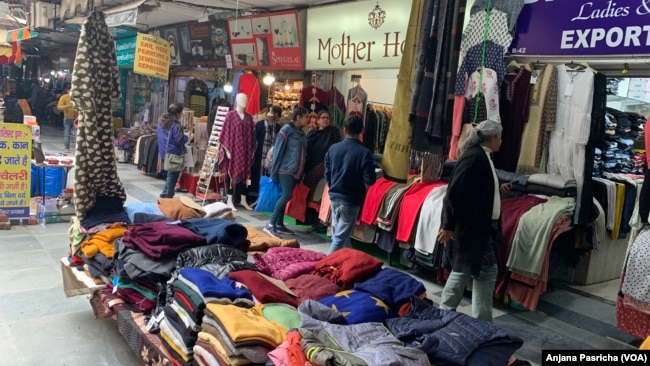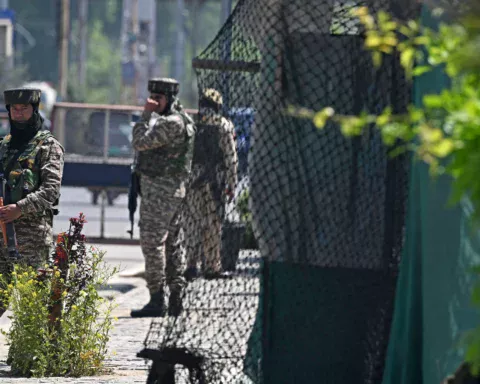NEW DELHI — India will become the world’s most populous country sometime this year, overtaking China, according to the United Nations.
After China reported this month that its population had shrunk for the first time in 60 years, some experts said that India may already be home to more people than China.
“It is not unexpected,” said Poonan Muttreja, executive director at the Population Foundation of India, an advocacy nonprofit organization. “We knew we are going to actually surpass China in 2027 but because of the acceleration in decline of population in China, it has happened faster.”
Both countries have roughly 1.4 billion people. But overtaking China is not just a number — it’s a significant shift, according to demographers. While China’s population has begun reducing sooner than projected, India’s will continue to grow for another three decades. But much more importantly, while China is now aging, nearly half of Indians are under 25 years of age.
That represents an opportunity for India to reap an economic dividend, but experts say much will depend on how the country leverages its numbers, especially its massive working-age population.
These young people can be a pool of talent and a labor resource at a time when many countries are graying and can potentially become a huge emerging market that will attract global companies and investment.
“We are a big market from the consumption side, and we can also be the biggest suppliers of trained manpower,” said S.Y. Quraishi, a former election commissioner, who has authored a book on “The Population Myth – Islam, Family Planning and Politics in India.”
“At the same time there are challenges. For example, India will need to create 90 million non-farm jobs before the end of the decade,” he pointed out.
The numbers are daunting — there are already 900 million working age people and that number is set to hit the billion-mark by the end of the decade.
That worries many young people in a country where the unemployment rate has been stubbornly high in recent years. While India’s economy has recovered from the slump due to the COVID-19 pandemic, and is now the world’s fastest growing major economy, only about 40% of its workforce is employed or is even looking for jobs, according to estimates.
College students are perturbed about what this means for their future.
“More people, less jobs, more competition — the big population is a disadvantage for us,” said undergraduate student Anmol Jain, who fears that entrance examinations for a postgraduate course that he is preparing for will become even more fiercely competitive.
But there is also optimism among those who see India’s youth bulge as representing dynamism and opportunity. “Younger minds have more ideas. Entrepreneurship is the solution,” points out Aran Gulia, another college student. “People like me have ideas. I don’t have the capital obviously but if younger India has the ideas, we can carve our way through.”

To achieve that potential, experts stress that policy makers must move quickly to improve access to quality education — only about 5% of the country’s workforce has undergone formal skills training. “That number is not acceptable, it has to be much higher,” said Quraishi. “Obviously we need to do a lot more.”
Concerns mainly center around India’s lesser developed, poorer northern states such as Uttar Pradesh and Bihar, where education levels are lower and the population is growing more quickly compared to southern states that slowed their population growth rates faster as literacy levels improved.
“There are two things: One is skilling the new generation, the other is to enhance the skills of those who don’t have top of the line skills to be more productive. Identify areas where job opportunities are going to open up in the future,” Muttreja said.
She says while momentum has picked up, it is still slow. Pointing out that access to smartphones has increased exposure and fired aspirations through towns and remote villages, she warns that failure to provide enough opportunities “would lead to social strife, it would lead to a lot of young, unemployed, frustrated, unhappy people. So, we have to invest in them.”
That is also what many students want in a country where experts have long voiced concerns that most schools and universities do not pay enough attention to creative thinking but emphasize rote learning.
“Provide us the right skills, because what we are being taught right now in college is not very relevant in our jobs,” said Ishita Sud, an undergraduate student at one of Delhi University’s most prestigious colleges. As a huge vote bank, she hopes the government will pay more attention to the needs of its youth population.
India only has a narrow window to reap a demographic dividend from its young people — as education improves and incomes grow, women are having fewer children and birth rates have dropped below replacement level, according to latest data.
“Women want to have two or less than two children at an average. So, our population is going to decline very rapidly,” Muttreja said.
That means India, like China, will begin aging sooner rather than later.
















